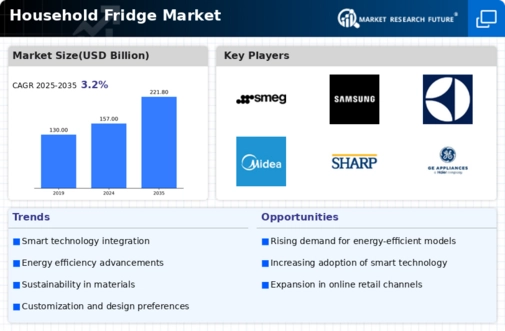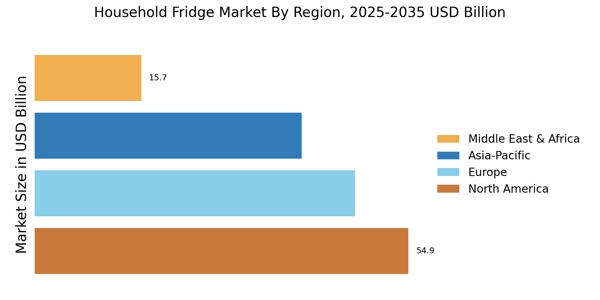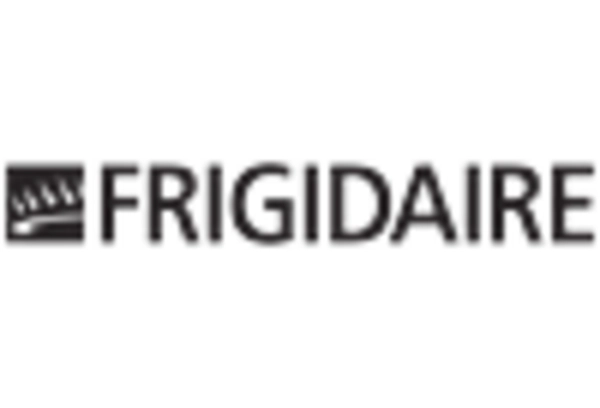The Household Fridge Market is currently characterized by a dynamic competitive landscape, driven by innovation, sustainability, and technological advancements. Major players such as Whirlpool (US), Samsung (KR), and LG Electronics (KR) are at the forefront, each adopting distinct strategies to enhance their market positioning. Whirlpool (US) emphasizes product innovation and energy efficiency, while Samsung (KR) focuses on smart technology integration, enhancing user experience through connectivity. LG Electronics (KR) is also heavily invested in smart appliances, aiming to create a seamless ecosystem for consumers. Collectively, these strategies not only foster competition but also push the market towards a more technologically advanced and environmentally conscious future.
In terms of business tactics, companies are increasingly localizing manufacturing to reduce costs and improve supply chain efficiency. This approach appears to be a response to the growing demand for faster delivery and customization. The market structure is moderately fragmented, with several key players holding substantial market shares. However, the influence of these major companies is significant, as they set trends that smaller players often follow, thereby shaping the overall competitive environment.
In August 2025, Whirlpool (US) announced the launch of its new line of energy-efficient refrigerators, which utilize advanced cooling technology to reduce energy consumption by up to 30%. This strategic move not only aligns with global sustainability goals but also positions Whirlpool as a leader in eco-friendly appliances, appealing to environmentally conscious consumers. The introduction of these products is likely to enhance brand loyalty and attract new customers seeking energy-efficient solutions.
In September 2025, Samsung (KR) unveiled its latest smart refrigerator model, featuring AI-driven inventory management and recipe suggestions based on available ingredients. This innovation reflects Samsung's commitment to integrating cutting-edge technology into everyday appliances, thereby enhancing user convenience. The strategic importance of this launch lies in its potential to differentiate Samsung in a crowded market, appealing to tech-savvy consumers who prioritize smart home integration.
In October 2025, LG Electronics (KR) entered a strategic partnership with a leading tech firm to develop IoT-enabled refrigerators that can communicate with other smart devices in the home. This collaboration signifies LG's focus on creating a cohesive smart home ecosystem, which is increasingly becoming a consumer expectation. The partnership is likely to enhance LG's competitive edge by offering unique functionalities that resonate with modern consumers.
As of October 2025, the competitive trends in the Household Fridge Market are heavily influenced by digitalization, sustainability, and the integration of artificial intelligence. Strategic alliances are becoming more prevalent, as companies recognize the value of collaboration in enhancing product offerings and market reach. Looking ahead, competitive differentiation is expected to evolve, shifting from traditional price-based competition to a focus on innovation, technological advancements, and supply chain reliability. This transition suggests that companies that prioritize these aspects will likely emerge as leaders in the market.


















Leave a Comment